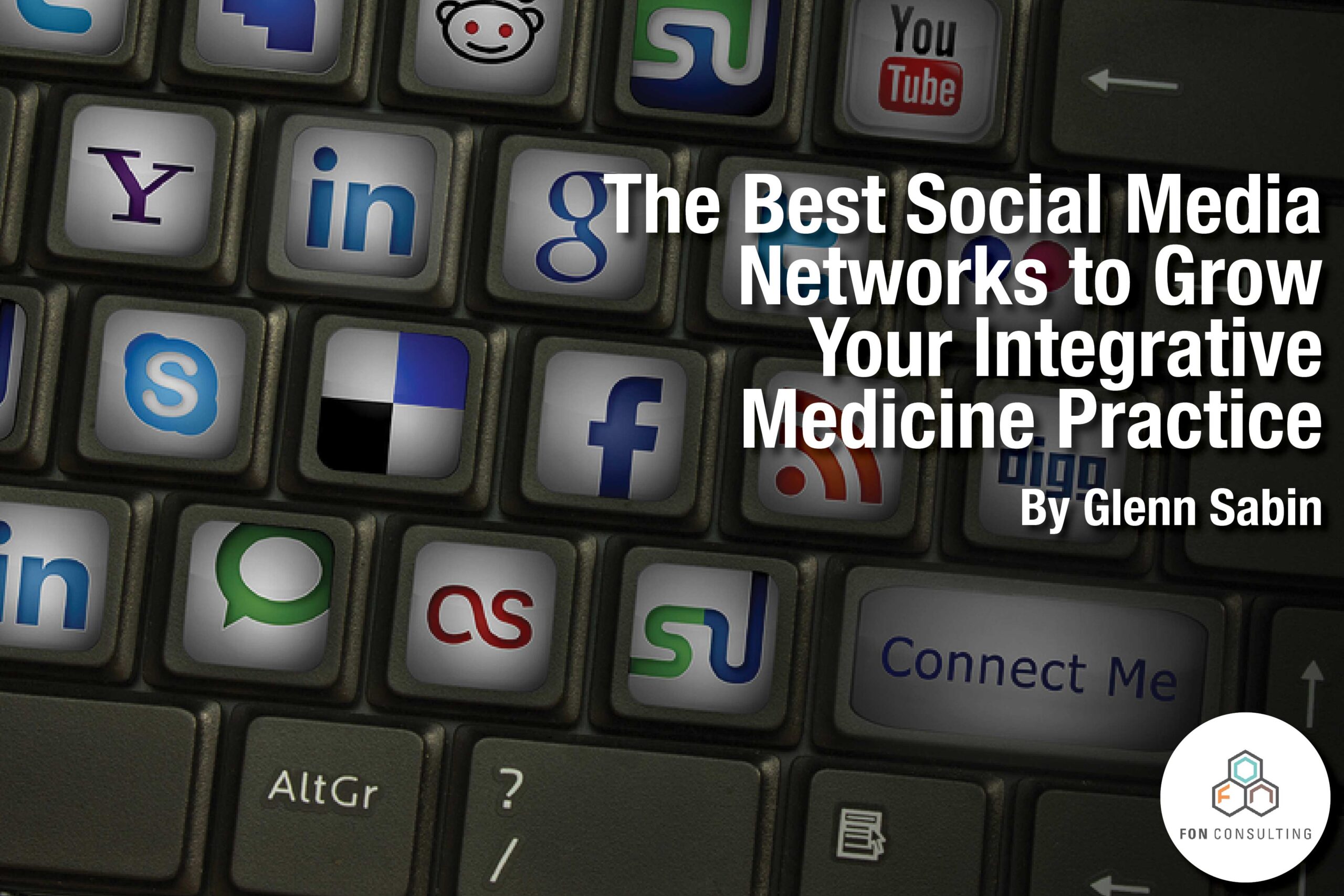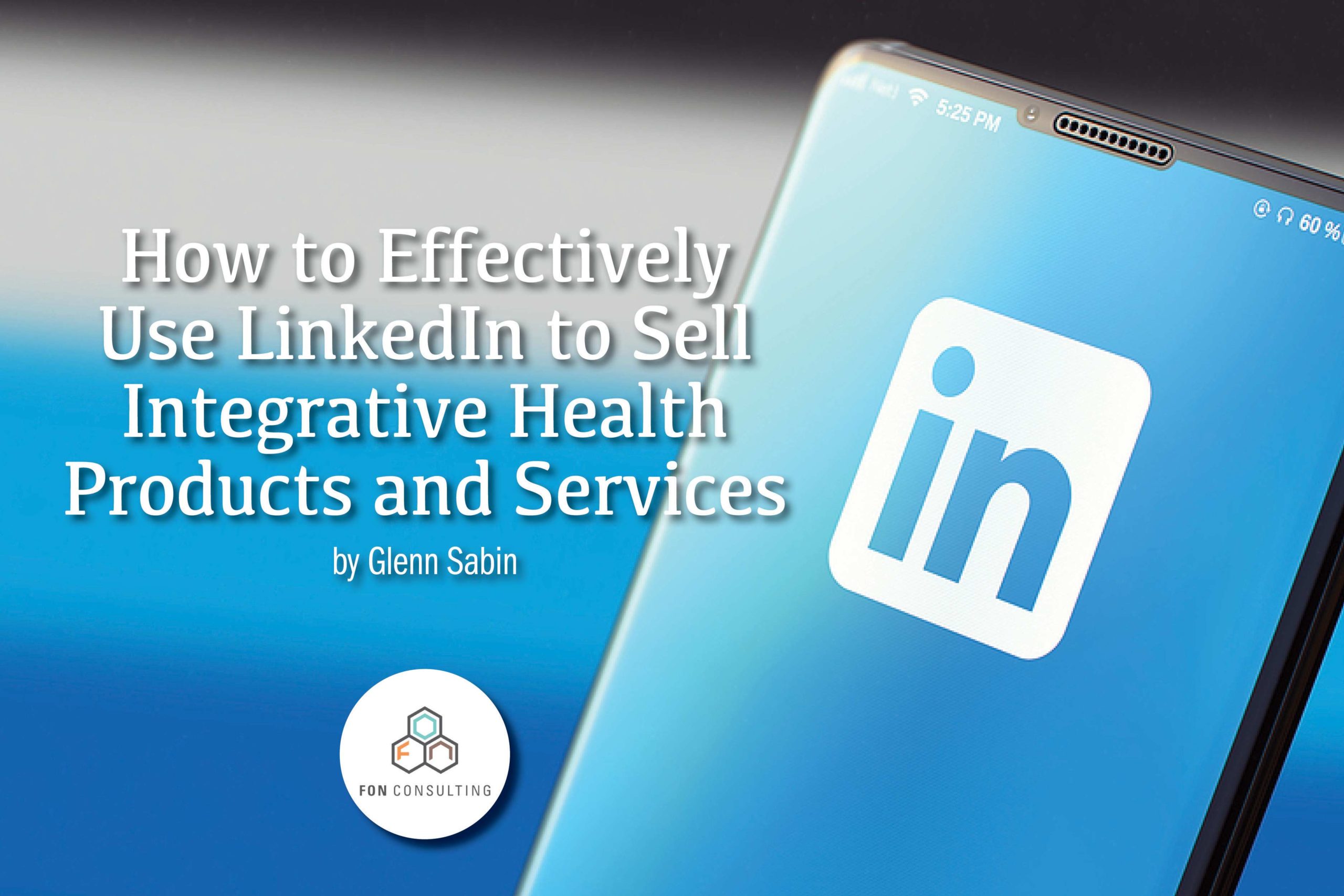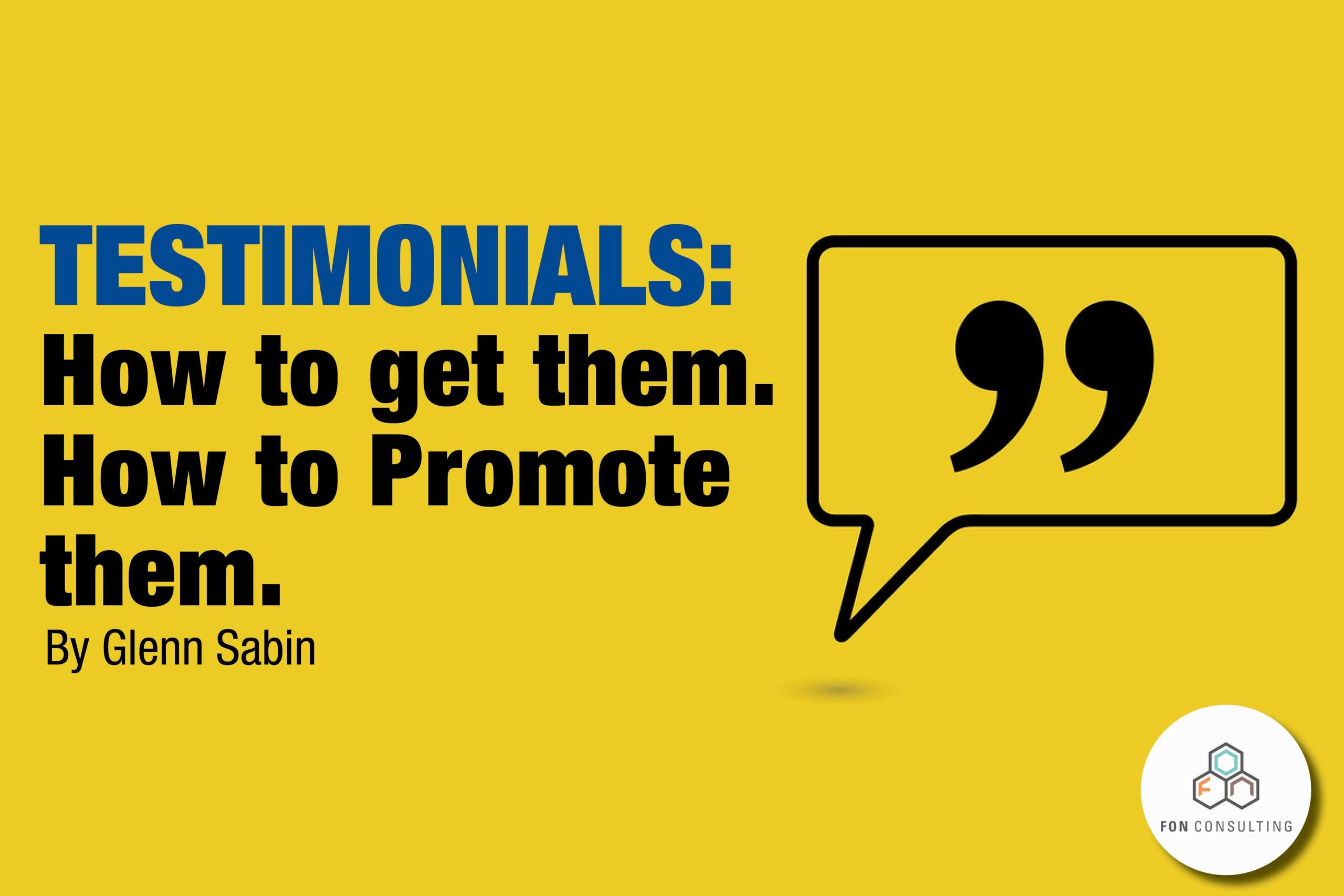The Best Social Media Networks to Grow Your Integrative Medicine Practice
By Glenn Sabin

I am often asked: What are the best social media networks in which to grow an integrative or functional medicine practice and position a brand?
And I answer:
- The ones where your current and prospective patients and clients spend the most time, and…
- The social media networks that you like the most, and can fit into the daily mix of priorities
Then I continue with the why, my own examples, and the how-tos:
You see, if you attempt to engage with too many networks, especially all at once, you are likely to dilute your efforts and fail to make REAL impact.
Today there are hundreds of active social media networks. Some huge—some smaller and growing.
Relax, you do not have to be everywhere!
A clinic or brand does not need 37 different social media profiles.
I am a proponent of going deep, then wide.
Going deep allows you to utilize social media for that which it’s best designed: listening, engaging, and sharing with your community. It establishes trust around your brand.
Enjoying this article? Subscribe and get our latest, delivered straight to your inbox.
Even some sizeable companies limit their social media presence to a selected few networks to create a significant, focused presence.
Done well, going deep converts fans, likes, and followers into patients and customers.
Social Channels I Use
For FON, my go-to social media site is LinkedIn because FON is a business-to-business consultancy and LinkedIn is the largest professional network. In addition to my personal profile, FON has a LinkedIn Group and a company page.
A number of FON clients originated from LinkedIn. I have over 6,000 connections, and, in addition, more than 6,000 people who follow me.
I post links to FON content on up to 50 LinkedIn Groups. People click to the FON site and are asked to subscribe to continue receiving high-quality content.
I also use Twitter and Google+, with the latter mostly for SEO purposes. Google’s search algorithm features Google+ profiles high on its search results pages.
The combination of LinkedIn, Twitter, and Google+ best supports my business goals and FON’s brand recognition.
Notwithstanding, YouTube or Facebook might work well for FON, but I have no strong indication that my clients and prospects spend time searching these networks for integrative health business-related matters. However, if I offered online courses, a private Facebook group page would make sense to further engage my audience.
Use the Social Networks Best for Your Unique Situation
Solo integrative and functional medicine practices, clinics, and centers are consumer-facing. Though everyone on LinkedIn is a consumer, I do not think a business professional network is the place to attract local patients and clients.
There will be exceptions to this thinking, because, for instance, a high-end (read: expensive) program for, say, men’s optimal performance, allows for tight targeting through LinkedIn with advertising and sponsored posts.
Engaging Patients and Clients
More often than not, for most integrative and functional medicine practices, I recommend the trio of Facebook, Twitter, and YouTube as the core social media mix… at least as a starting point to gain traction.
Facebook should be where you invest the most time engaging fans and building community. The platform has the most detailed ad targeting options of any social network. This alone, while building your organic (free) reach of fans, can allow for advertising buys to carefully test and measure results—such as conversions of super-engaged fans to new patients and customers.
If you plan to offer educational events in your community with a goal of converting attendees to patients and clients, Facebook Events, tied to the Eventbrite ticketing platform, is a dynamic duo. This is another reason for building an engaged, large following of fans on Facebook, even though you will need to periodically ‘boost’ posts to reach your entire fan base.
It’s not that Instagram, Pinterest, and other major ‘visual’ social media networks are not viable; dependent upon your unique brand and situation, one or more of these may be a better match than my suggested core mix. Test the waters to see what works best for you.
Essential Research
- What Social Media Networks Do Your Competitors Use?
- It’s worth taking a look at how your primary competitors utilize social media.
- What specific networks do they use?
- How large is their reach—their base of fans and followers?
- How do they engage and share interesting information with their community?
- Are they linking to original high-quality content that lives on their website, or using the social profiles to overtly ‘sell’ programs, products, or services?
- Are staff members contributing to the process?
Your competitors’ activities across their social media profiles should inform, not dictate your organization’s social media marketing strategy.
Do What You Enjoy
If you are a busy practitioner with plenty to say and teach, but the thought of investing a few hours each week writing blog articles makes you shudder, then don’t. Instead, consider creating short audio podcasts or two-minute ‘explainer’ videos.
Prefer writing micro-posts or commenting on news findings? Twitter or Facebook might be your best fit. In a practice that features cooking classes and programs, Instagram or Pinterest may be a terrific match to show off images of your healthy, artful cuisine.
Most importantly, you must be consistent with your social media engagement, listening and sharing to grow a significant community of fans and followers over time. Anything less will be an exercise in futility.
Commit and persevere.
Leverage the Strengths of Your Team
If you have an inter-professional staff of integrative practitioners, get them involved in your overarching efforts from a content creation and social media engagement standpoint. Be sure to keep everyone laser-focused on the few media platforms for which you have decided to establish a brand presence and build first.
It goes without saying, really, but if you are a solopreneur or practitioner, you must be more careful than ever to choose your social profiles, and the time investment required to get traction.
Vital Information to Your Success
Social Media Profiles are ‘Rented’, not ‘Owned’
Your social media profiles are not yours. Sure, you may have invested countless hours engaging and building a following, but at the end of day you are a renter, not an owner of your social profiles. The rules can be changed instantly.
Case in point is when Facebook stopped including your posts on every single one of your fans’ pages. They started offering to ‘boost’ your posts to reach more folks for a fee. This one single move has added greatly to Facebook’s massive wealth.
Engaging and growing an audience within your chosen social media networks is terrific. But I am a firm believer that these networks and relationships should be leveraged to bring folks to your ‘owned’ media—your website.
Once visitors land on your site, you stand the best chance to get them to take the next desired action. Perhaps that’s signing up for your newsletter, or booking a 15-minute complimentary phone consult. Or, better yet, making an appointment, or purchasing a product or service.
Actual ‘selling’ can and does happen on social media, but there’s no place like home… your website, in an environment you own and control.
Give, Give Some More… Then Ask
Just be sure to ‘give’ and ‘share’ by a 15:1 ratio to each time you ‘pitch’ and ‘sell’. In other words, you need to help, listen, and share many more times than you ask for anything, otherwise few will financially support your business through social media. They will be turned off.
Focus on solving problems and being helpful, and sales will follow.
Next Steps
Now’s a good time to revisit all the social profiles you may already have collected and refocus on the few that can best lead to growing your community around your integrative health brand.
Your mileage may vary among the platforms you ultimately choose. Putting solid energy and attention into fewer networks will lead to added engagement, further social sharing, more followers, and ultimately—with a sustainable strategy in place—new customers to grow your enterprise.
A Social Checklist:
Discover on which social platforms your clients spend their valuable time.
Take stock of where you currently have profiles.
- Choose the networks that you like the most, and can fit into your schedule.
- Review where your top competitors have a social media presence, and how they utilize various networks.
- Go deep in two or three platforms to start, and then reassess.
- Own your own media, and leverage social media to regularly point to it.
[This post was originally published in July 2015. It has been updated and expanded for comprehensiveness, to reflect new technology, and to include additional tips.]
About FON
FON is a leading integrative health and medicine business development and strategy consulting firm. FON specializes in custom solutions for growing patient volume, developing programs, and increasing product sales. Our practical business models are driven by innovative marketing, clear messaging, and customer engagement via branded storytelling.
Contact us today to schedule a complimentary 30-minute consultation to discuss your business development or personal brand needs.

Read Glenn’s story.





















